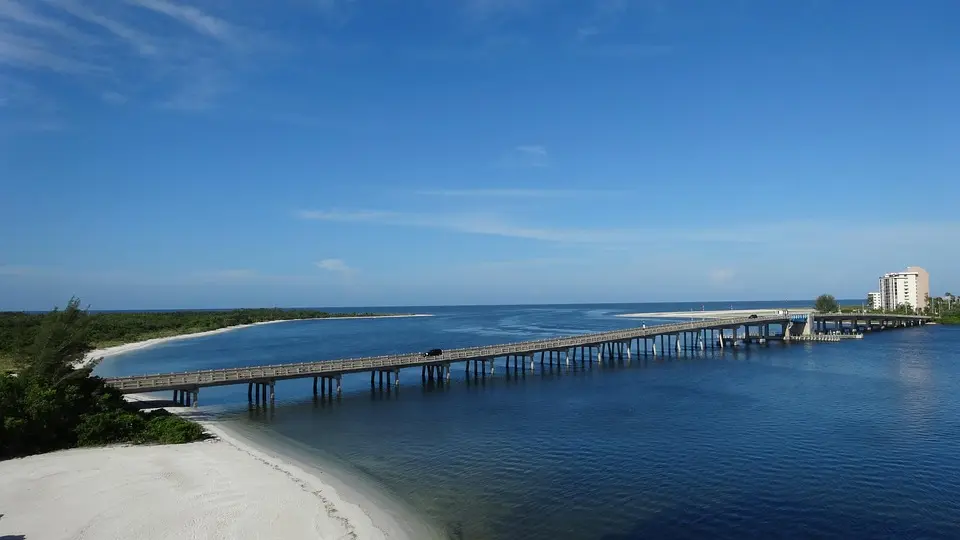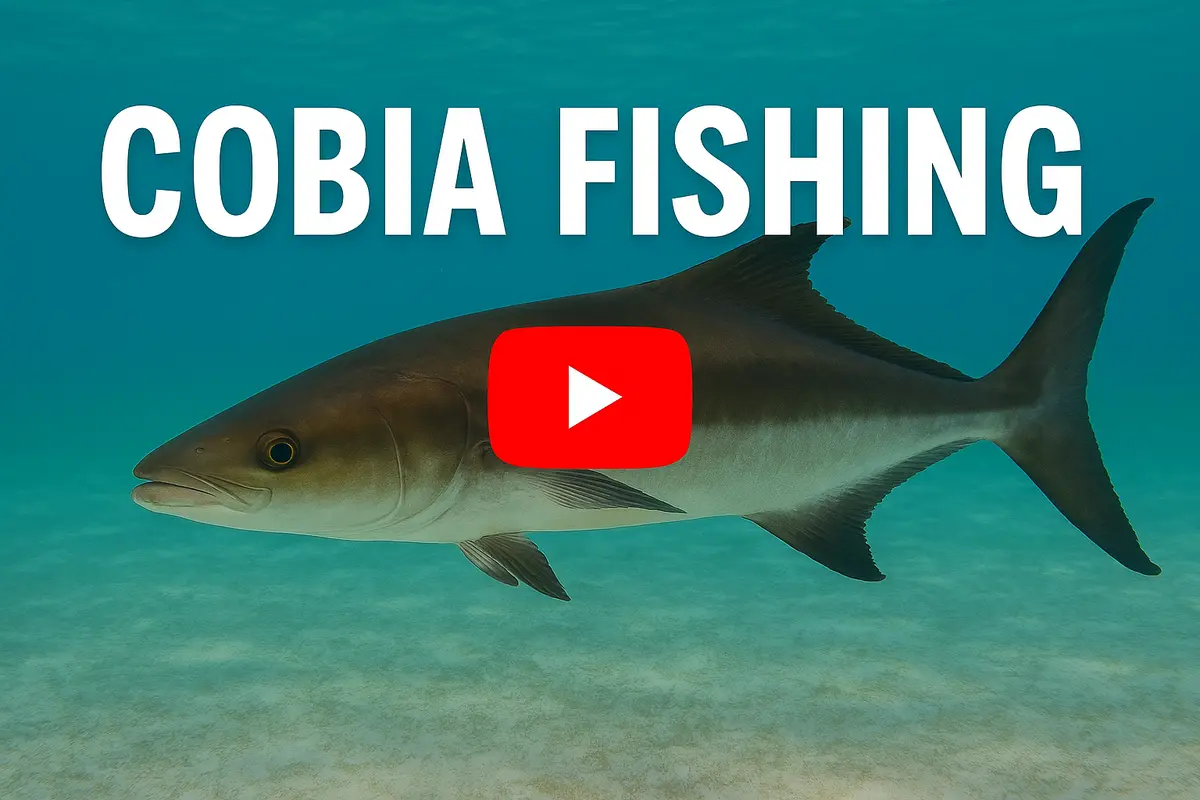Cobia: Habitats - Bridges
Table of Contents
- Fishing Bridges for Cobia: An In-Depth Guide
- Bridge Features & Cobia Behavior
- 🎣 Cobia Fishing Case Studies: Florida & Gulf Coast Bridges
- 1. Navarre Beach Fishing Pier – Florida Panhandle
- 2. Matanzas Pass Bridge – Fort Myers Beach, Southwest Florida
- 3. Bahia Honda Bridge – Lower Florida Keys
- Targeting Cobia Near Bridges
- Live & Cut Baits
- Artificial Lures
- Community & Expert Tips
- Popular YouTube Search Terms
Fishing Bridges for Cobia: An In-Depth Guide

Photo by ckirner
Bridge Features & Cobia Behavior
- Structure: Cobia congregate around bridge pilings, spans, abutments, floating debris and sargassum lines—using these features as ambush points for passing bait.
- Seasonal Migration: Cobia migrate south in late fall and return north in spring and early summer; bridges along their coastal corridors see peak traffic during these windows.
- Tides & Currents: Incoming tides funnel baitfish against pilings; eddies and slack‑water pockets just downstream of structure often hold cobia.
- Water Temperature: Optimal range is 68–72 °F (20–22 °C); activity and feeding intensity drop outside this window.
- Water Clarity: Moderate clarity aids sight‑casting; very clear water can spook fish, while stained water limits visibility.
- Cloud Cover & Low Light: Overcast or low‑light conditions reduce wariness and increase feeding activity, giving anglers a sight‑casting advantage.
- Wind: A moderate 10–15 mph breeze creates surface chop that conceals anglers’ presentations and can trigger more aggressive strikes when combined with favorable tides.
🎣 Cobia Fishing Case Studies: Florida & Gulf Coast Bridges
1. Navarre Beach Fishing Pier – Florida Panhandle
- Location: Navarre, Florida
- Structure: 1,545-foot concrete pier extending into the Gulf
- Best Season: Late March to early June
- Techniques:
- Sight-fishing from the elevated pier
- Casting live eels, crabs, or brightly colored jigs
- Targeting cobia during their westward spring migration
- Notable Features:
- Longest fishing pier in Florida
- Clear waters allow for effective sight-fishing
- Regular catches of cobia, especially during migration periods
- References:
2. Matanzas Pass Bridge – Fort Myers Beach, Southwest Florida
- Location: Fort Myers Beach, Florida
- Structure: Concrete girder bridge with adjacent fishing piers
- Best Season: Spring and fall
- Techniques:
- Fishing near bridge pilings using live bait such as pinfish or threadfin herring
- Employing artificial lures like bucktail jigs
- Adjusting positions along the bridge to locate active cobia
- Notable Features:
- Accessible fishing piers under the bridge
- Dynamic currents around the structure attract baitfish and predatory species
- Opportunities for both novice and experienced anglers
- References:
3. Bahia Honda Bridge – Lower Florida Keys
- Location: Bahia Honda Key, Florida
- Structure: Historic bridge within Bahia Honda State Park
- Best Season: Winter months (October to April)
- Techniques:
- Fishing from the old bridge structure or nearby areas
- Using live bait like crabs or pinfish
- Casting jigs or soft plastic lures
- Sight-fishing in clear waters
- Notable Features:
- Proximity to both deep and shallow waters
- Bridge pilings attract baitfish, luring cobia
- Scenic views enhance the fishing experience
- References:
Targeting Cobia Near Bridges
Live & Cut Baits
| Bait | Rig Type | Setup Details |
|---|---|---|
| Live Bluefish | Free‑line on 8/0 circle hook | 10–12″ bluefish on an 8/0 circle hook, free‑lined just above pilings. Rod: 7′6″ medium‑heavy fast; Reel: 6000‑series; Line: 50 lb braid; Leader: 60 lb mono. |
| Cut Mullet | Fish‑finder rig | 4–6 oz sliding sinker on braid sleeve → 8/0 hook with mullet strip. Rod: 7′ medium‑heavy; Reel: 6000; Line: 50 lb braid; Leader: 60 lb mono. |
| Live Pinfish | Carolina rig | 2 oz egg sinker → bead → swivel → 3 ft leader of 60 lb mono → 5/0 hook with pinfish. Rod: 7′ medium‑heavy; Reel: 6000; Line: 50 lb braid. |
| Cut Bonito | Bottom rig | 6 oz sinker → plastic sleeve → 8 ft leader of 60 lb mono → 6/0 hook with bonito strip. Rod: 7′6″ medium‑heavy; Reel: 6000; Line: 50 lb braid. |
Artificial Lures
| Lure | Retrieve Style | Gear Specs |
|---|---|---|
| Feather/Bucktail Jig | Hop & swim | Rod: 7′6″ medium‑heavy fast; Reel: 6000; Line: 50 lb braid; Leader: 60 lb fluoro. |
| Soft Plastic Eel Imitation | Slow, steady twitch | Rod: 7′6″ medium‑heavy fast; Reel: 6000; Line: 50 lb braid; Leader: 60 lb fluoro. |
| Large Swimbait (6–8″) | Slow, smooth steady retrieve | Rod: 7′6″ medium‑heavy fast; Reel: 6000; Line: 50 lb braid; Leader: 60 lb fluoro. |
| Lipless Twitchbait | Twitch & pause | Rod: 7′6″ medium‑heavy fast; Reel: 6000; Line: 50 lb braid; Leader: 60 lb fluoro. |
Community & Expert Tips
- Find floating structures—wood, sargassum, capsized debris—and sight‑cast to cobia holding just beneath; they key on any isolated cover.
- Elevate your vantage—stand on a tower or seat to spot dark shapes under glare. Fish low‑cloud days with minimal chop for best visibility.
- Seek underwater humps and ledges near major bridges; these features concentrate bait and cobia during migration.
Armed with bridge‑specific tactics, seasonal timing, tide strategy, and precise gear setups, you’re ready to land trophy cobia off any bridge. Tight lines!

Credit: YouTube – “Sight Fishing GIANT Cobia on Bridges and Rays in Virginia”
Search on YouTube for “fishing Bridges for Cobia tips”
Popular YouTube Search Terms
| Search Term | Thumbnail |
|---|---|
| Cobia fishing Chesapeake Bay Bridge Tunnel |  |
| Bridge fishing tips |  |
| Bridge pilings cobia |  |
| Night bridge cobia fishing |  |
| Kayak bridge cobia |  |
Ask AI for More Info
Try our AI assistant for free—sign up to access this powerful feature.
👉 Sign Up to Ask AI